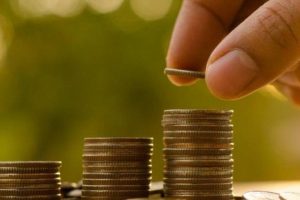When Federal Reserve Chairman Jerome Powell last appeared before Congress, in June 2022, inflation had reached a four-decade high of nearly 9% and showed no sign of abating.
This week, Powell returns to Capitol Hill for two days of hearings under very different circumstances. The Fed has raised interest rates dramatically in the past year to combat accelerating prices, and year-over-year inflation has declined for seven straight months.
If anything, however, Powell’s task has become even more complicated.
Just a month ago, the economy seemed to be cooling off and inflation was steadily falling. But since then, a deluge of government data has painted a very different picture. Consumer spending has remained strong, hiring remains strong, and the economy continues to expand steadily. And recent government reports show that inflationary pressures are easing more gradually and irregularly than previous data had shown.
At a news conference last month, Powell said the long-awaited process of “disinflation,” a broad and steady slowdown in inflation, had finally begun. However, he stressed that he was only in its early stages and would take longer than many economists assumed. Other Fed officials have since echoed that message.
“The disinflation boost we need is far from certain,” Mary Daly, president of the Federal Reserve Bank of San Francisco, said in a speech on Saturday. “Clearly there is more work to be done.”
Daly added that higher rates, “sustained for longer,” are likely to be needed.
Indeed, with the exception of the housing industry, which has been hit by higher borrowing costs, most of the economy has generally seemed resilient to the rate hikes the Fed has engineered. The central bank has raised rates at the fastest pace since the 1980s. However, most economists believe that for inflation to return to its 2% target, Fed policymakers will need to further increase rates. rates—and keep them at a peak for longer—than they had projected in December.
“The economy is getting hotter than most policymakers anticipated a few months ago,” Michael Pearce, senior US economist at Oxford Economics, wrote in a research note.
Pearce expects the Fed to raise its key rate by a quarter point at each of its next three meetings, and sees the possibility of further hikes beyond those. Fed hikes generally make mortgages, car loans, credit card rates, and business loans more expensive. It’s a trend that can slow spending and inflation and also threaten to push the economy into recession.
That high-stakes dilemma will put Powell in a tricky spot during congressional hearings on Tuesday and Wednesday. He will have to placate Democrats worried that aggressive Fed hikes will cause a painful recession while he reassures Republicans that the Fed will send rates high enough to quell inflation.
Signs of the economy’s continued resilience have eased recession fears. But concerns have also grown that inflation will be harder to conquer.
Fed officials warned last week that its benchmark rate may have to rise more this year than its previous forecast of about 5.1%. Christopher Waller, a member of the Fed’s seven-member Board of Governors, said he believed that if the economy remained as active as it seemed in January, when half a million jobs were added, the Fed’s key rate would have to exceed 5.4%. That would be almost a point higher than its current level of around 4.6%. The risk of a weak economy, with waves of layoffs and company bankruptcies, would be more likely.
[Con información de The Associated Press]
Connect with the Voice of America! Subscribe to our channel Youtube and activate notifications, or follow us on social networks: Facebook, Twitter and Instagram.





![[Img #74683]](https://thelatestnews.world/wp-content/uploads/2024/12/The-main-mistakes-to-avoid-when-betting-on-electronic-sports-150x150.jpg)









